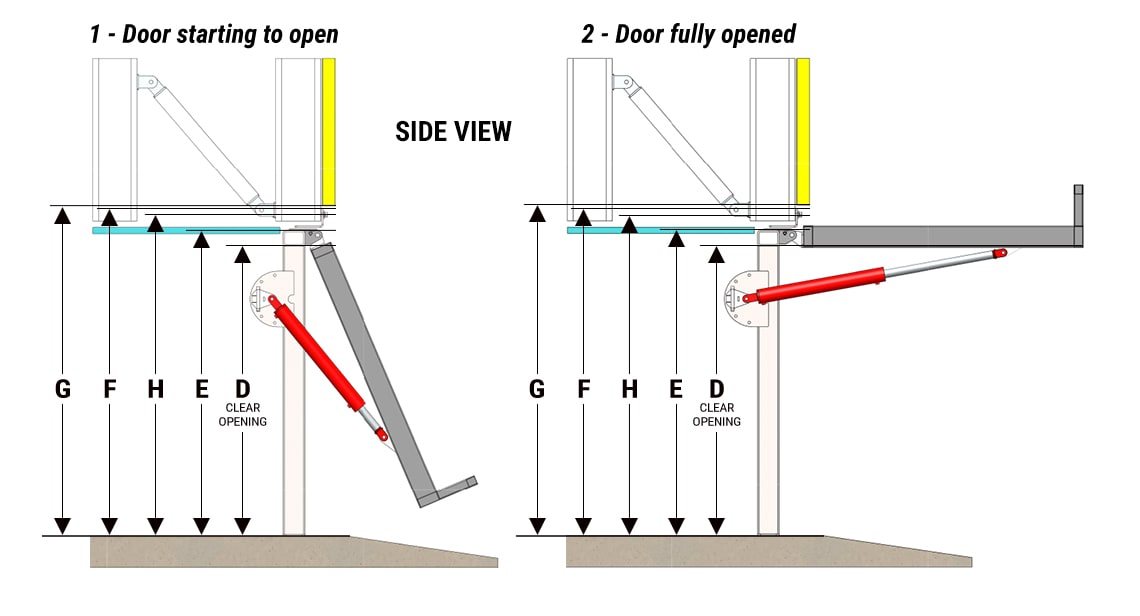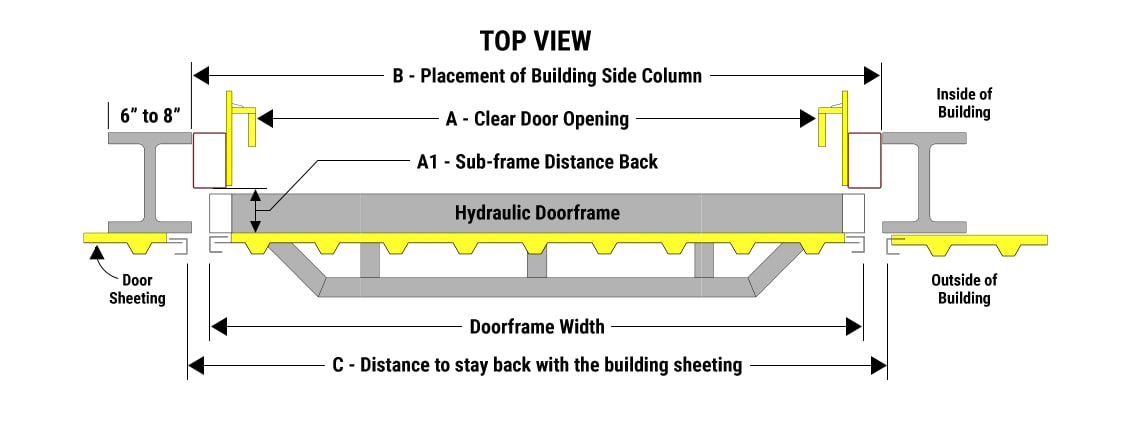Schweiss Doors partners with building suppliers, contractors, architects, and more to ensure that you receive a hydraulic door that perfectly fits your building or open space. The Schweiss Doors team is available to assist you with all things regarding your hydraulic door. Making sure that your hydraulic door fits and operates properly is our top priority. Browse our listings of door weights, loadings, hinge locations, and other overhead hydraulic door specifications (specs) to see what we have available.
It is important that you talk with your contractor and the building manufacturer to make sure that your building’s structural design can handle a hydraulic door. A hydraulic door exerts a large amount of weight on the door header, endwall, and overall structure of the building. Show your contractor and building owner the overhead hydraulic door specifications to ensure that your building can handle it. Hydraulic doors tend to pull away from the building at the hinge line when they are in a full open position. Horizontal loads can exert considerable pressure on the building structure when the hydraulic door is in the open position, which can wear on the hydraulic door hinge and the building. In order for the hydraulic door to be properly supported, the building header design must meet the standard criteria for both deflection and strength, both vertically and horizontally. This is the only way to ensure that the hydraulic door can be supported in all positions.
Schweiss Hydraulic Doors provides our A-1, A-2, A-3, and A-4 spec sheets so that you can see the loads that would be applied to your building and door. These spec sheets include the information that you will need to make accurate measurements so you can rest assured knowing that your building can handle the load of a hydraulic door. Call (507) 426-8273 if you need any assistance or have any additional questions about hydraulic doors.

Schweiss strongly recommends that upgrade equipment be used on every hydraulic door
WARNING: Without the proper upgrade equipment, the hydraulic door could cause property damage, personal injury or death.
The many different ways to attach a hydraulic door to your new or existing building structure (wood, steel, quonset, sidewalls, etc.) Detailed illustrations to help you further understand how to prepare your building for a hydraulic door, without changing the design of your steel or wood building. Many different applications of an optional Freestanding Header. The Schweiss Handbook should be read by anyone involved in the design, specifications, selection or purchase of an industrial hydraulic door operator or automated hydraulic door system.



We do not underestimate the importance of quality material when building our doors. We use heavy square tubing for the hydraulic door frames to create a sturdy base for the rest of the hydraulic door. The bottom of the hydraulic door is built using a truss that gives the structure of your hydraulic door extra strength. Our hydraulic door design incorporates metal strategically to a make our hydraulic doors stronger, cleaner, and most importantly, safer. We are so certain in the strength and quality of our hydraulic doors that we offer the best warranty in the business. Browse our four different models of hydraulic doors and find an affordable hydraulic door for your building today!
Schweiss Doors reserves the right to change specifications without any requirement to change or modify past or existing doors. Copyrighted © 2020 Schweiss Doors. All rights reserved. No part of this publication may be reproduced in any way without permission.